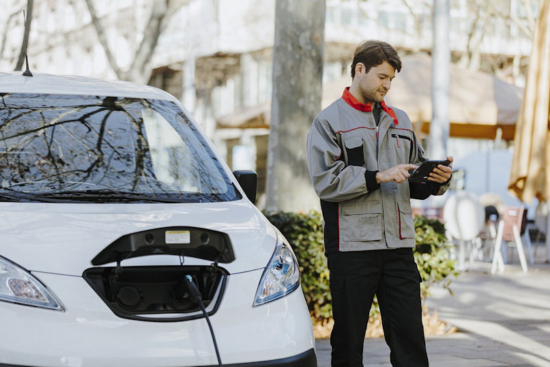Bridgestone: Despite favourable TCO, energy prices may affect EV demand
 Webfleet Solutions points out that an electric powertrain enables fleets to benefit from considerable fuel savings (Photo: Bridgestone)
Webfleet Solutions points out that an electric powertrain enables fleets to benefit from considerable fuel savings (Photo: Bridgestone)
Research from Bridgestone and Webfleet Solutions suggests that high energy prices may dampen fleet demand for electric vehicles. Upon asking 300 fleet decision-makers, 53 per cent responded that they expect this development even though the mobility solutions specialists calculate that going electric will save money over a vehicle’s entire lifespan.
The price cap on electricity increased from 21p to 28p per kWh in April and is set to rise again in October, following an Ofgem (Office of Gas and Electricity Markets) review.
TCO calculations increasingly important
Bridgestone nevertheless continues to champion electromobility. Andrea Manenti, vice-president North Region, Bridgestone EMIA, comments that “despite soaring energy prices pushing up the day-to-day running costs of electric vehicles, in most cases the whole-life cost of operating petrol or diesel equivalents remains higher.”
Although 34 per cent of survey respondents admitted to a lack of confidence when calculating an EV fleet’s TCO and while Maneti admits that electric vehicles “may be more expensive to lease or purchase upfront than their fossil-fuelled counterparts,” the North region vice-president stresses that but total cost of ownership (TCO) “still tends to favour” electric cars and vans, with “significant savings” being realised by fleets that have made the transition. “Parity for electric trucks is anticipated within the next three years. As a result, TCO calculations have become increasingly important in fleet budgeting and electrification planning.”
Lower cost per mile
“The electric powertrain enables fleets to benefit from considerable fuel savings, with a much lower cost per mile despite the energy price hike, and with fewer moving parts, significantly lower service, maintenance and repair costs,” adds Beverley Wise, regional director UK and Ireland, Webfleet Solutions.
“Other variables that should be taken into account – from insurance costs, tax liabilities and ULEZ charges to charging infrastructure and residual vehicle values – also contribute to the TCO disparity between EVs and internal combustion vehicles,” Wise continues. “Telematics solutions can play an important role in helping fleets calculate TCO savings by generating data insights that enable comparisons between petrol and diesel vehicle running costs and real-world EV performance, based on vehicle driving patterns.”
Clean Air Zone cost worries
The Bridgestone and Webfleet Solutions research also revealed that 62 per cent of fleets (68 per cent of HGV operators and 57 per cent of van fleets) are concerned about the cost impact of Clean Air Zones. The same number, meanwhile, believe that the government must increase investment in transport decarbonisation and green transport initiatives if it is to meet its transport sustainability targets.
The government is targeting a 78 per cent reduction in emission by 2035, compared to 1990 levels, and aims for the UK to be net zero by 2050.




Comments